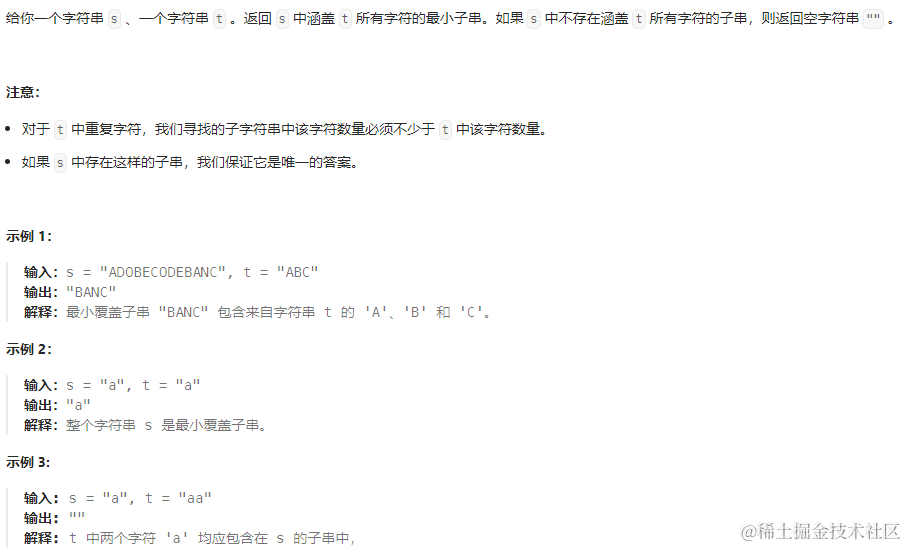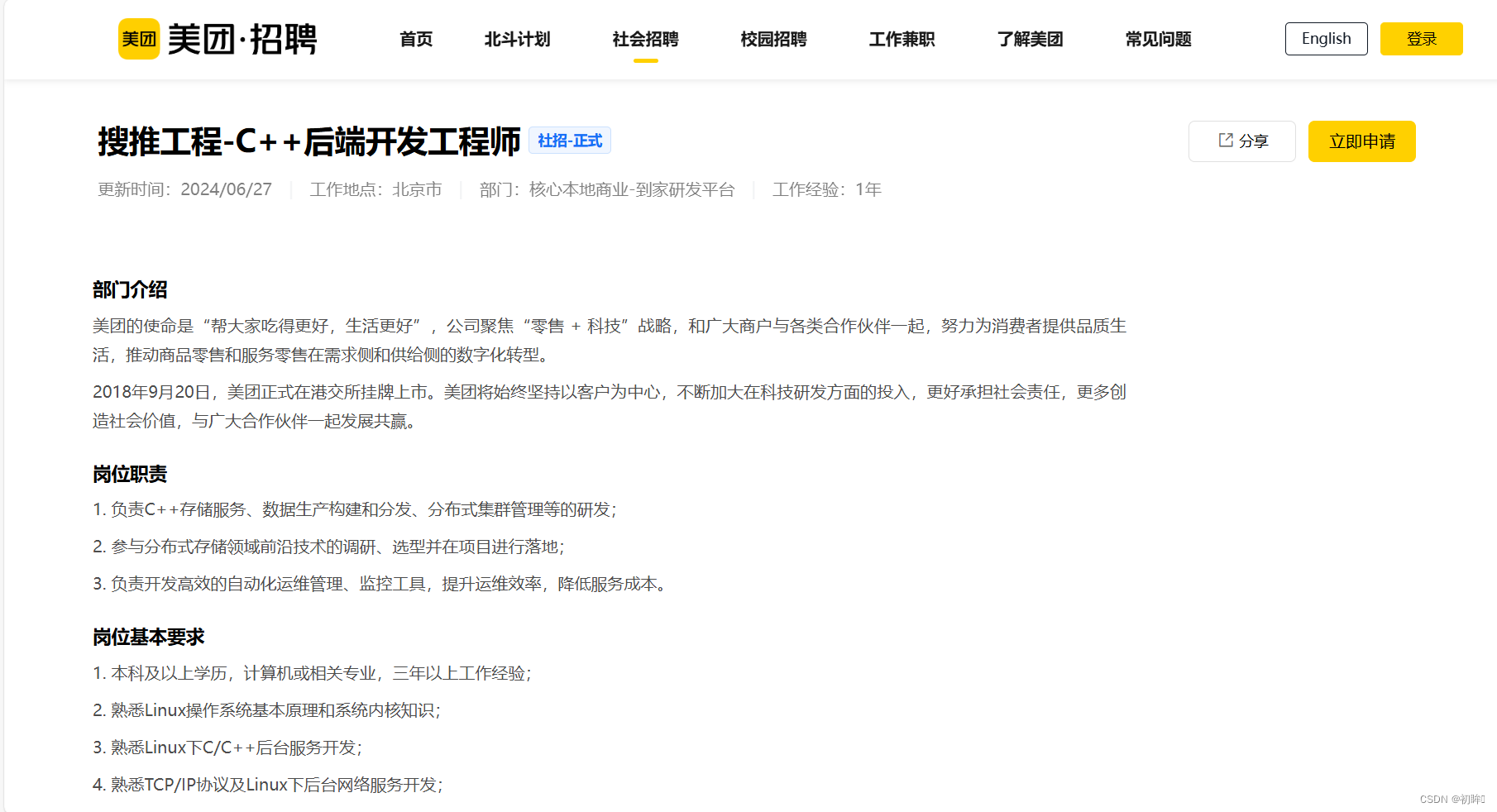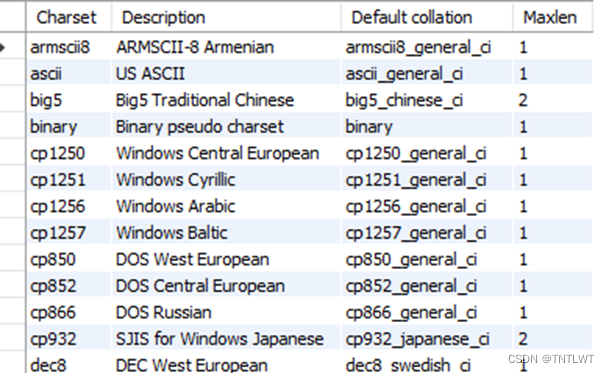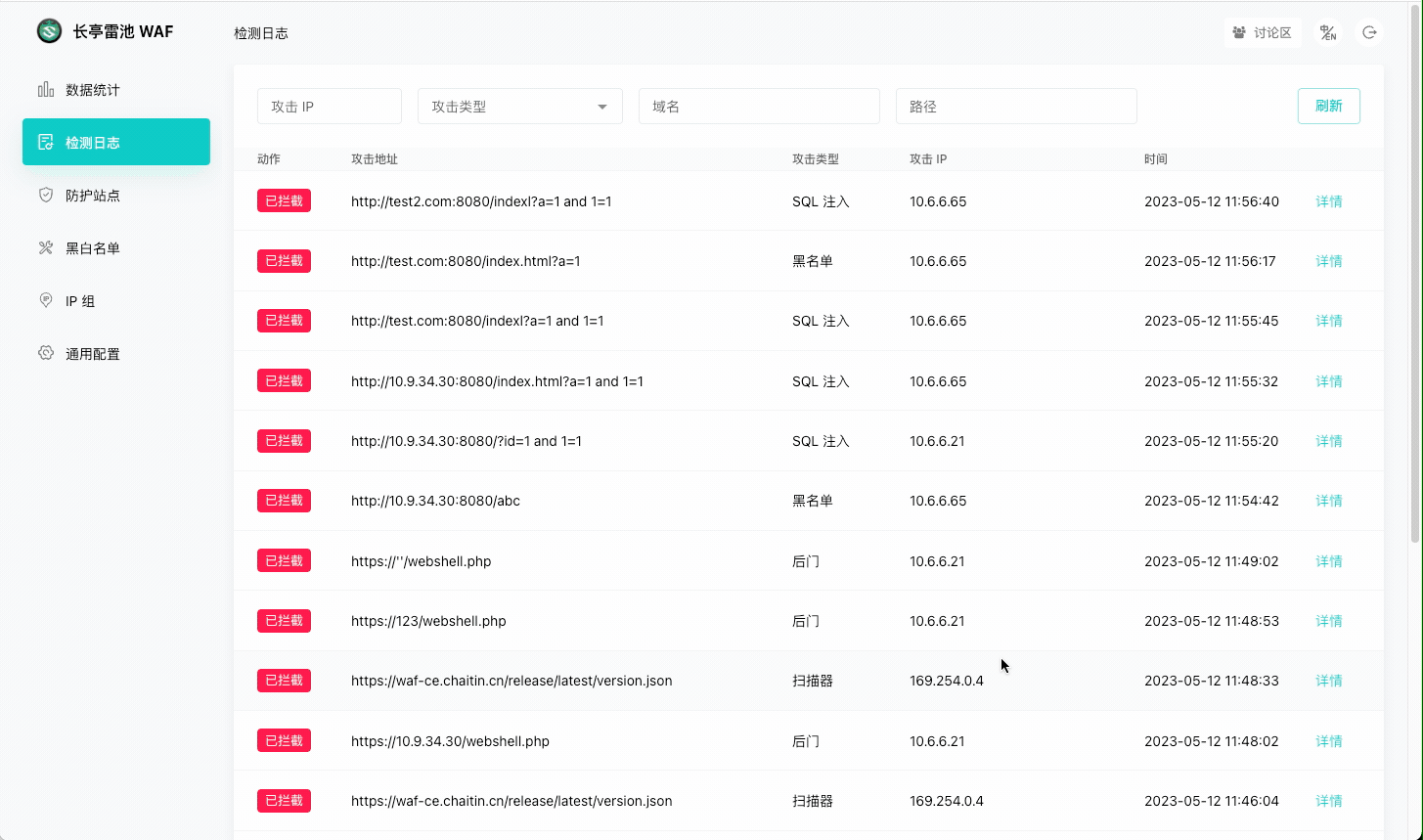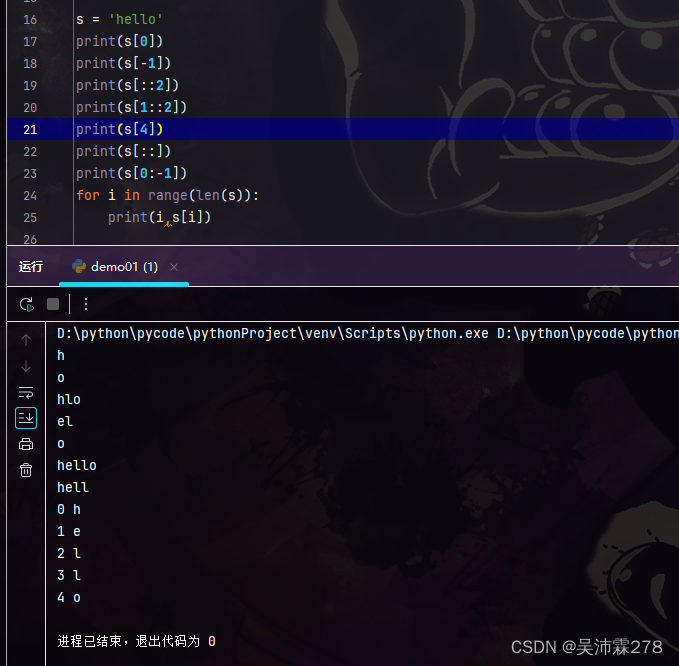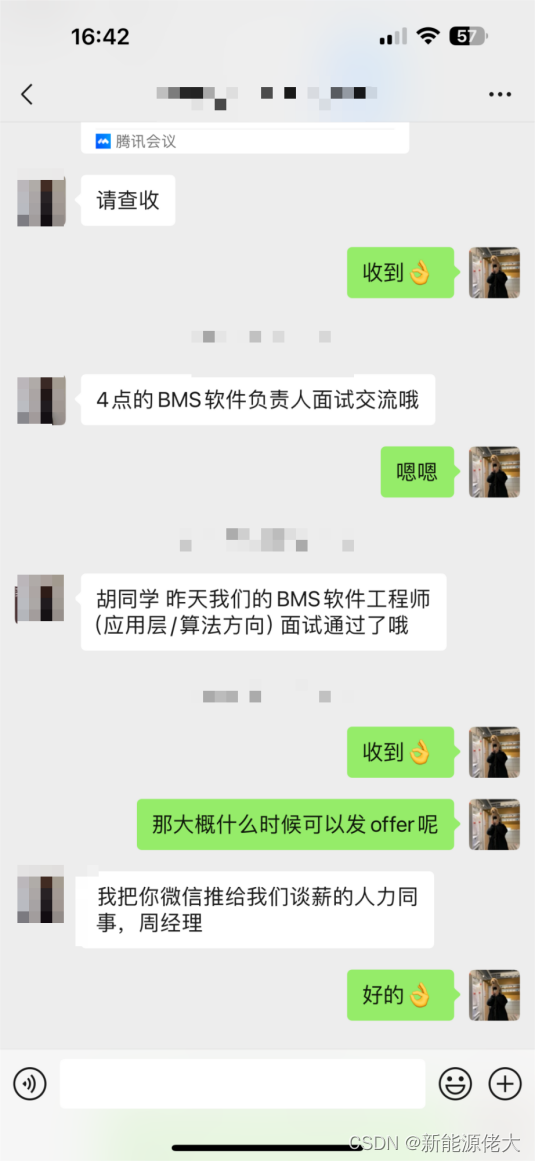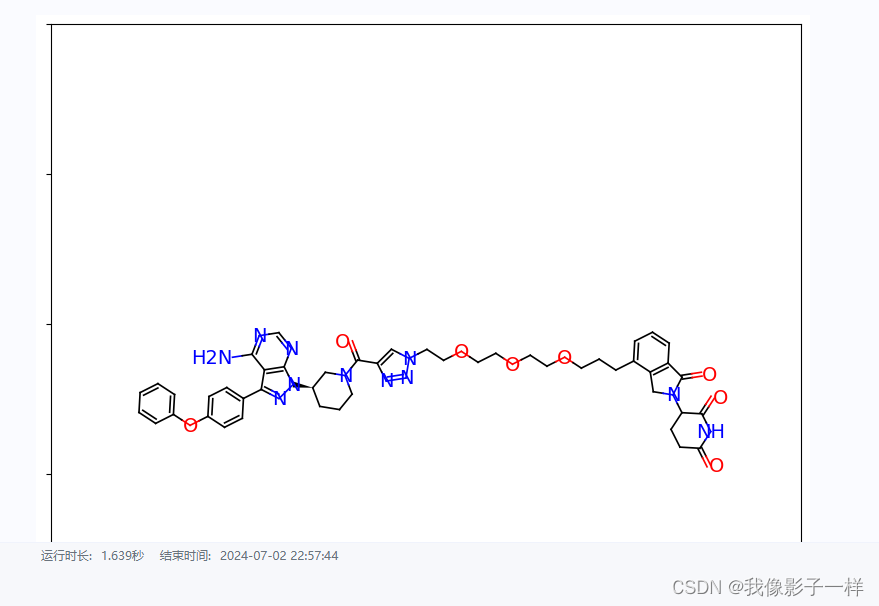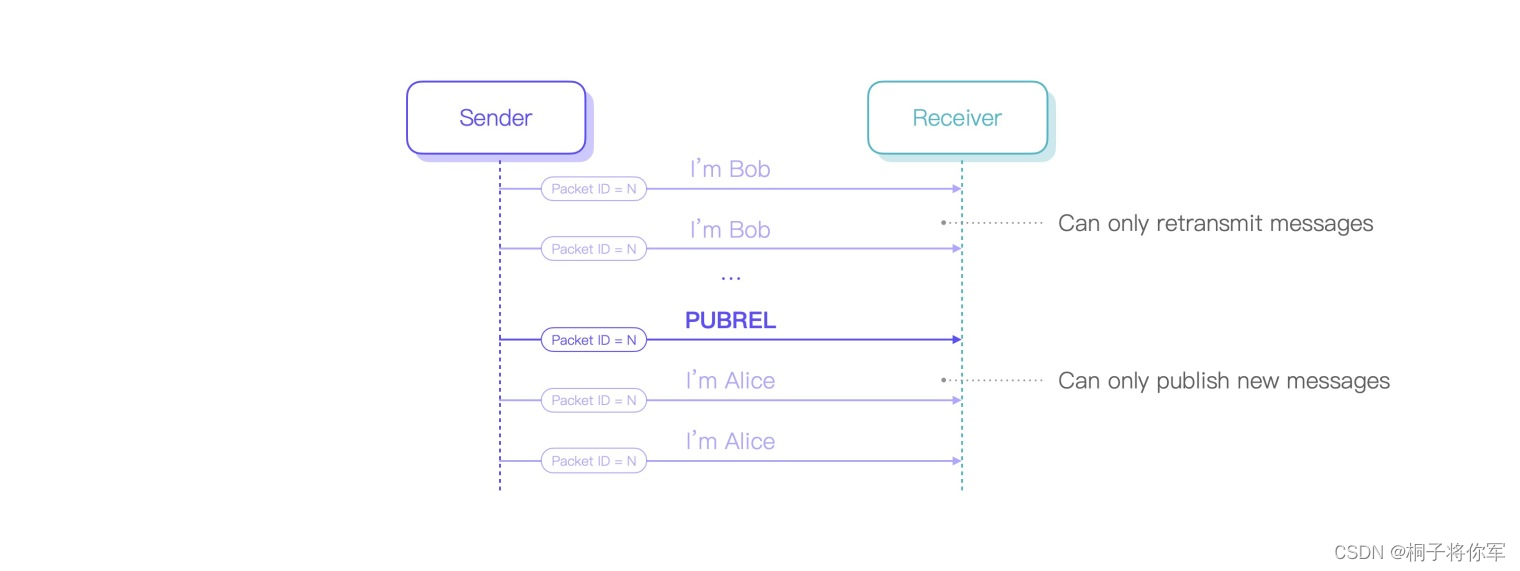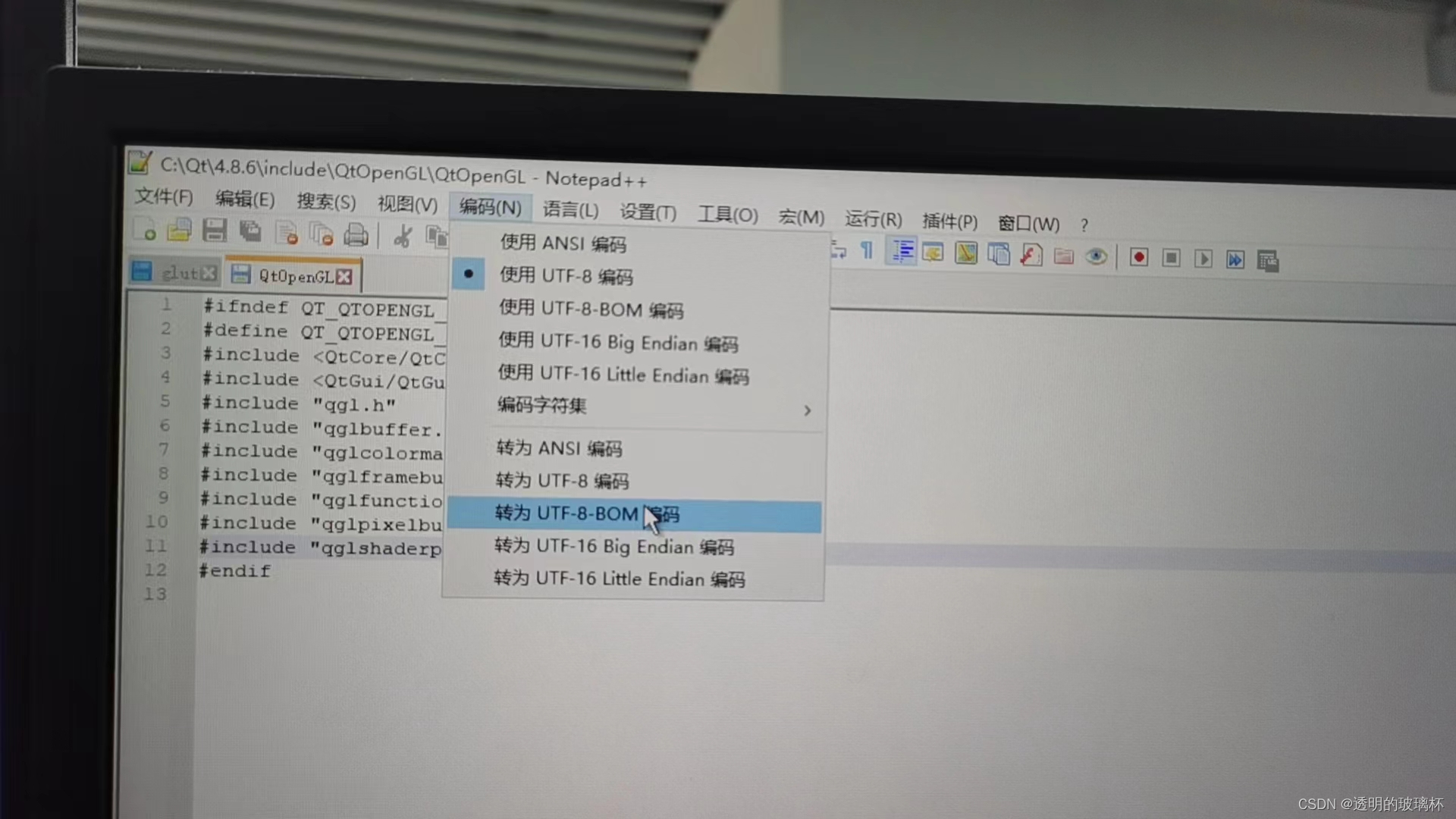1. Vue3简介
- 2020年9月18日,
Vue.js发布版3.0版本,代号:One Piece(n - 经历了:4800+次提交、40+个RFC、600+次PR、300+贡献者
- 官方发版地址:Release v3.0.0 One Piece · vuejs/core
- 截止2023年10月,最新的公开版本为:
3.3.4
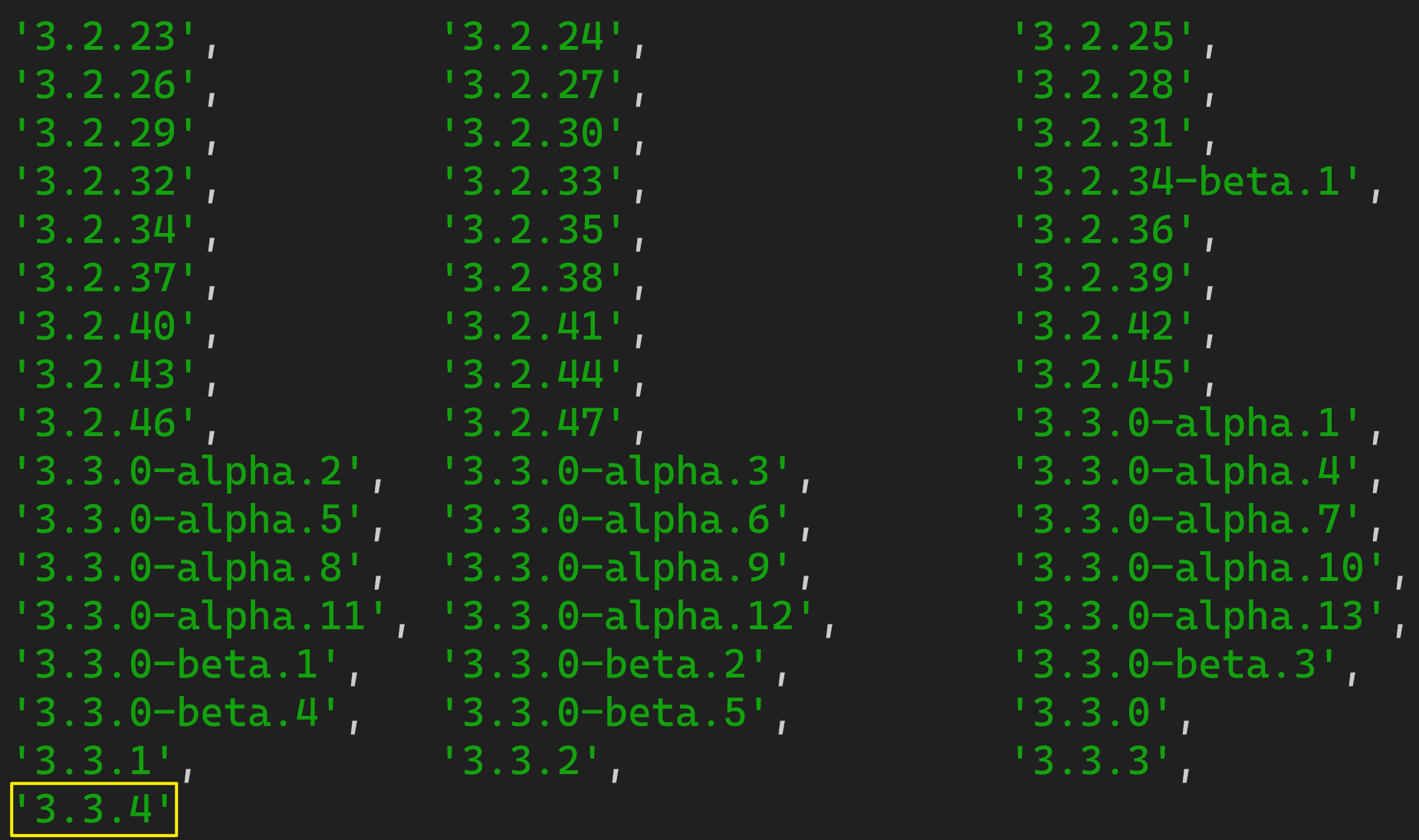
1.1. 【性能的提升】
-
打包大小减少
41%。 -
初次渲染快
55%, 更新渲染快133%。 -
内存减少
54%。
1.2.【 源码的升级】
-
使用
Proxy代替defineProperty实现响应式。 -
重写虚拟
DOM的实现和Tree-Shaking。
1.3. 【拥抱TypeScript】
Vue3可以更好的支持TypeScript。
1.4. 【新的特性】
-
Composition API(组合API):-
setup -
ref与reactive -
computed与watch…
-
-
新的内置组件:
-
Fragment -
Teleport -
Suspense…
-
-
其他改变:
-
新的生命周期钩子
-
data选项应始终被声明为一个函数 -
移除
keyCode支持作为v-on的修饰符…
-
2. 创建Vue3工程
2.1. 【基于 vue-cli 创建】
点击查看官方文档
备注:目前
vue-cli已处于维护模式,官方推荐基于Vite创建项目。
## 查看@vue/cli版本,确保@vue/cli版本在4.5.0以上
vue --version
## 安装或者升级你的@vue/cli
npm install -g @vue/cli
## 执行创建命令
vue create vue_test
## 随后选择3.x
## Choose a version of Vue.js that you want to start the project with (Use arrow keys)
## > 3.x
## 2.x
## 启动
cd vue_test
npm run serve
2.2. 【基于 vite 创建】(推荐)
vite 是新一代前端构建工具,官网地址:https://vitejs.cn,vite的优势如下:
- 轻量快速的热重载(
HMR),能实现极速的服务启动。 - 对
TypeScript、JSX、CSS等支持开箱即用。 - 真正的按需编译,不再等待整个应用编译完成。
webpack构建 与vite构建对比图如下:

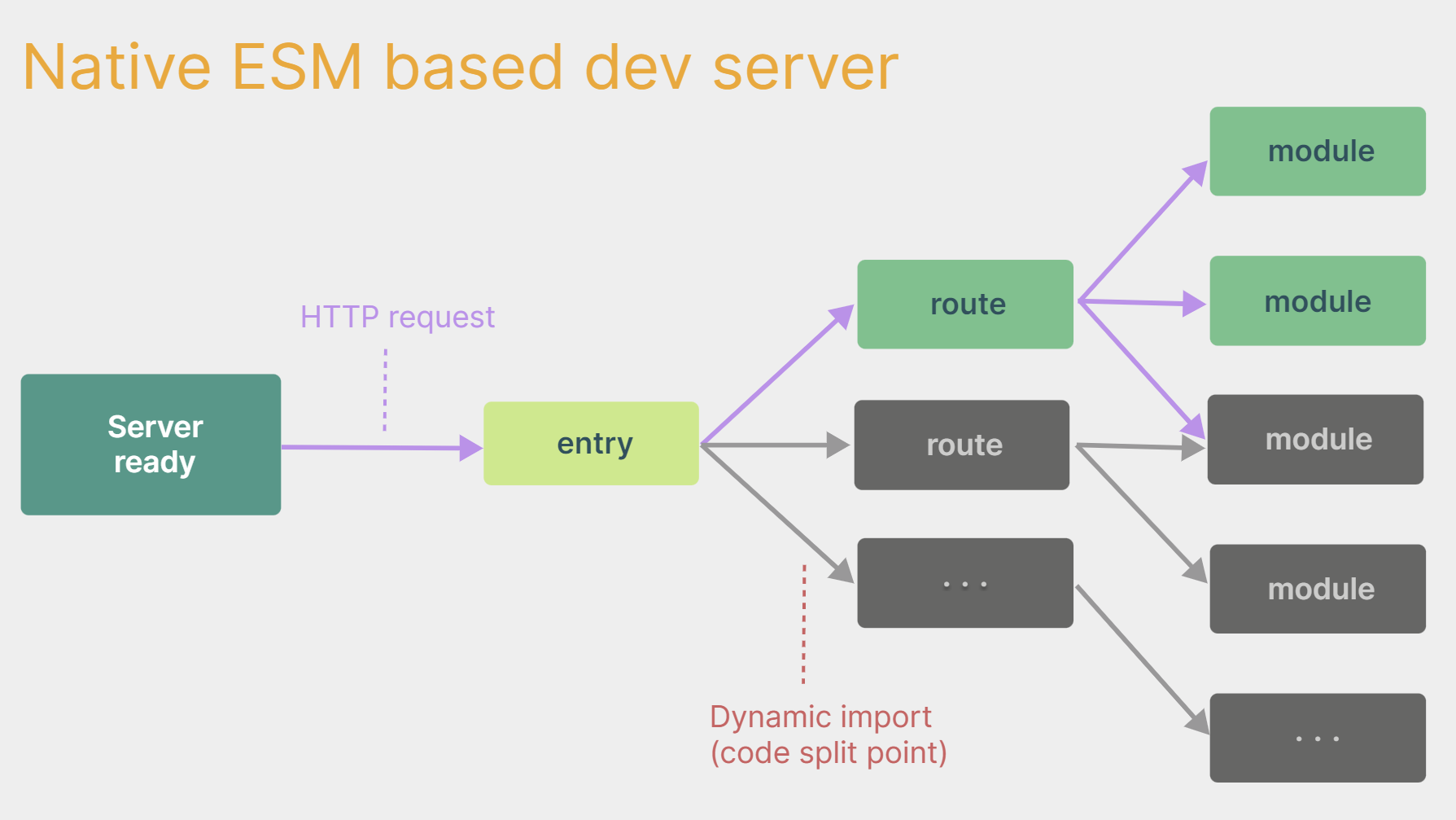
- 具体操作如下(点击查看官方文档)
## 1.创建命令
npm create vue@latest
## 2.具体配置
## 配置项目名称
√ Project name: vue3_test
## 是否添加TypeScript支持
√ Add TypeScript? Yes
## 是否添加JSX支持
√ Add JSX Support? No
## 是否添加路由环境
√ Add Vue Router for Single Page Application development? No
## 是否添加pinia环境
√ Add Pinia for state management? No
## 是否添加单元测试
√ Add Vitest for Unit Testing? No
## 是否添加端到端测试方案
√ Add an End-to-End Testing Solution? » No
## 是否添加ESLint语法检查
√ Add ESLint for code quality? Yes
## 是否添加Prettiert代码格式化
√ Add Prettier for code formatting? No
自己动手编写一个App组件
<template>
<div class="app">
<h1>你好啊!</h1>
</div>
</template>
<script lang="ts">
export default {
name:'App' //组件名
}
</script>
<style>
.app {
background-color: #ddd;
box-shadow: 0 0 10px;
border-radius: 10px;
padding: 20px;
}
</style>
安装官方推荐的vscode插件:


总结:
Vite项目中,index.html是项目的入口文件,在项目最外层。- 加载
index.html后,Vite解析<script type="module" src="xxx">指向的JavaScript。 Vue3**中是通过 **createApp函数创建一个应用实例。
2.3. 【一个简单的效果】
Vue3向下兼容Vue2语法,且Vue3中的模板中可以没有根标签
<template>
<div class="person">
<h2>姓名:{{name}}</h2>
<h2>年龄:{{age}}</h2>
<button @click="changeName">修改名字</button>
<button @click="changeAge">年龄+1</button>
<button @click="showTel">点我查看联系方式</button>
</div>
</template>
<script lang="ts">
export default {
name:'App',
data() {
return {
name:'张三',
age:18,
tel:'13888888888'
}
},
methods:{
changeName(){
this.name = 'zhang-san'
},
changeAge(){
this.age += 1
},
showTel(){
alert(this.tel)
}
},
}
</script>
3. Vue3核心语法
3.1. 【OptionsAPI 与 CompositionAPI】
Vue2的API设计是Options(配置)风格的。Vue3的API设计是Composition(组合)风格的。
Options API 的弊端
Options类型的 API,数据、方法、计算属性等,是分散在:data、methods、computed中的,若想新增或者修改一个需求,就需要分别修改:data、methods、computed,不便于维护和复用。
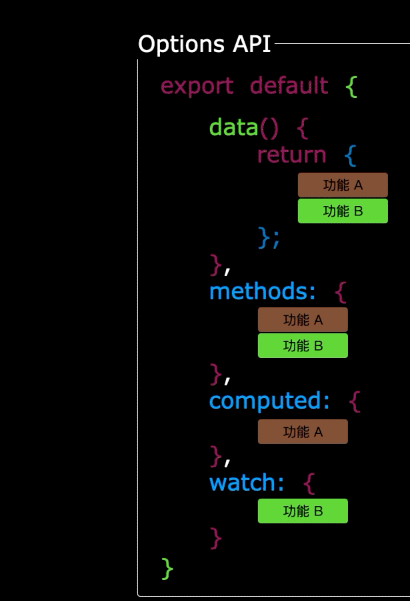

Composition API 的优势
可以用函数的方式,更加优雅的组织代码,让相关功能的代码更加有序的组织在一起。
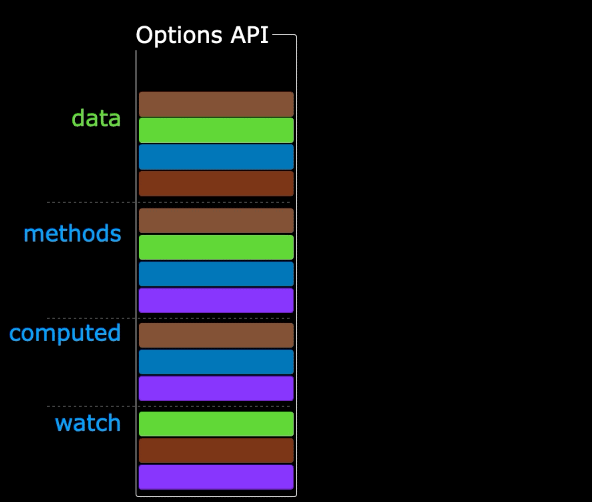
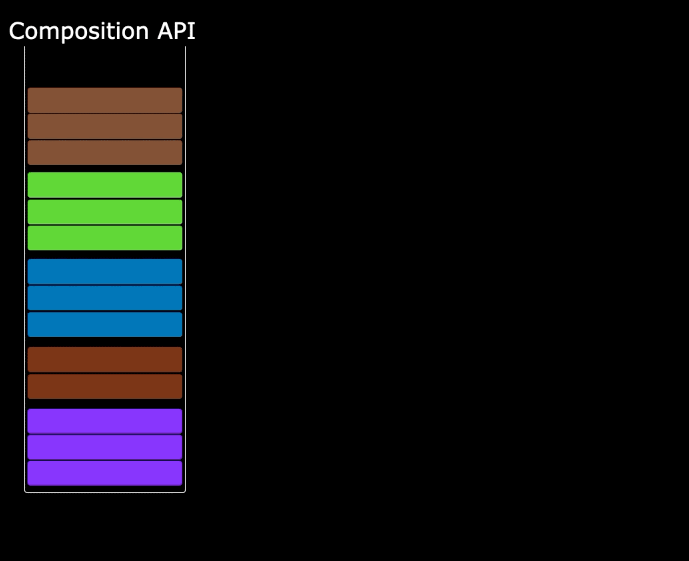
说明:以上四张动图原创作者:大帅老猿
3.2. 【拉开序幕的 setup】
setup 概述
setup是Vue3中一个新的配置项,值是一个函数,它是 Composition API “表演的舞台”,组件中所用到的:数据、方法、计算属性、监视…等等,均配置在setup中。
特点如下:
setup函数返回的对象中的内容,可直接在模板中使用。setup中访问this是undefined。setup函数会在beforeCreate之前调用,它是“领先”所有钩子执行的。
<template>
<div class="person">
<h2>姓名:{{name}}</h2>
<h2>年龄:{{age}}</h2>
<button @click="changeName">修改名字</button>
<button @click="changeAge">年龄+1</button>
<button @click="showTel">点我查看联系方式</button>
</div>
</template>
<script lang="ts">
export default {
name:'Person',
setup(){
// 数据,原来写在data中(注意:此时的name、age、tel数据都不是响应式数据)
let name = '张三'
let age = 18
let tel = '13888888888'
// 方法,原来写在methods中
function changeName(){
name = 'zhang-san' //注意:此时这么修改name页面是不变化的
console.log(name)
}
function changeAge(){
age += 1 //注意:此时这么修改age页面是不变化的
console.log(age)
}
function showTel(){
alert(tel)
}
// 返回一个对象,对象中的内容,模板中可以直接使用
return {name,age,tel,changeName,changeAge,showTel}
}
}
</script>
setup 的返回值
- 若返回一个对象:则对象中的:属性、方法等,在模板中均可以直接使用**(重点关注)。**
- 若返回一个函数:则可以自定义渲染内容,代码如下:
setup(){
return ()=> '你好啊!'
}
setup 与 Options API 的关系
Vue2的配置(data、methos…)中可以访问到setup中的属性、方法。- 但在
setup中不能访问到Vue2的配置(data、methos…)。 - 如果与
Vue2冲突,则setup优先。
setup 语法糖
setup函数有一个语法糖,这个语法糖,可以让我们把setup独立出去,代码如下:
<template>
<div class="person">
<h2>姓名:{{name}}</h2>
<h2>年龄:{{age}}</h2>
<button @click="changName">修改名字</button>
<button @click="changAge">年龄+1</button>
<button @click="showTel">点我查看联系方式</button>
</div>
</template>
<script lang="ts">
export default {
name:'Person',
}
</script>
<!-- 下面的写法是setup语法糖 -->
<script setup lang="ts">
console.log(this) //undefined
// 数据(注意:此时的name、age、tel都不是响应式数据)
let name = '张三'
let age = 18
let tel = '13888888888'
// 方法
function changName(){
name = '李四'//注意:此时这么修改name页面是不变化的
}
function changAge(){
console.log(age)
age += 1 //注意:此时这么修改age页面是不变化的
}
function showTel(){
alert(tel)
}
</script>
扩展:上述代码,还需要编写一个不写setup的script标签,去指定组件名字,比较麻烦,我们可以借助vite中的插件简化
- 第一步:
npm i vite-plugin-vue-setup-extend -D - 第二步:
vite.config.ts
import { defineConfig } from 'vite'
import VueSetupExtend from 'vite-plugin-vue-setup-extend'
export default defineConfig({
plugins: [ VueSetupExtend() ]
})
- 第三步:
<script setup lang="ts" name="Person">
3.3. 【ref 创建:基本类型的响应式数据】
- **作用:**定义响应式变量。
- 语法:
let xxx = ref(初始值)。 - **返回值:**一个
RefImpl的实例对象,简称ref对象或ref,ref对象的value属性是响应式的。 - 注意点:
JS中操作数据需要:xxx.value,但模板中不需要.value,直接使用即可。- 对于
let name = ref('张三')来说,name不是响应式的,name.value是响应式的。
<template>
<div class="person">
<h2>姓名:{{name}}</h2>
<h2>年龄:{{age}}</h2>
<button @click="changeName">修改名字</button>
<button @click="changeAge">年龄+1</button>
<button @click="showTel">点我查看联系方式</button>
</div>
</template>
<script setup lang="ts" name="Person">
import {ref} from 'vue'
// name和age是一个RefImpl的实例对象,简称ref对象,它们的value属性是响应式的。
let name = ref('张三')
let age = ref(18)
// tel就是一个普通的字符串,不是响应式的
let tel = '13888888888'
function changeName(){
// JS中操作ref对象时候需要.value
name.value = '李四'
console.log(name.value)
// 注意:name不是响应式的,name.value是响应式的,所以如下代码并不会引起页面的更新。
// name = ref('zhang-san')
}
function changeAge(){
// JS中操作ref对象时候需要.value
age.value += 1
console.log(age.value)
}
function showTel(){
alert(tel)
}
</script>
3.4. 【reactive 创建:对象类型的响应式数据】
- 作用:定义一个响应式对象(基本类型不要用它,要用
ref,否则报错) - 语法:
let 响应式对象= reactive(源对象)。 - **返回值:**一个
Proxy的实例对象,简称:响应式对象。 - 注意点:
reactive定义的响应式数据是“深层次”的。
<template>
<div class="person">
<h2>汽车信息:一台{{ car.brand }}汽车,价值{{ car.price }}万</h2>
<h2>游戏列表:</h2>
<ul>
<li v-for="g in games" :key="g.id">{{ g.name }}</li>
</ul>
<h2>测试:{{obj.a.b.c.d}}</h2>
<button @click="changeCarPrice">修改汽车价格</button>
<button @click="changeFirstGame">修改第一游戏</button>
<button @click="test">测试</button>
</div>
</template>
<script lang="ts" setup name="Person">
import { reactive } from 'vue'
// 数据
let car = reactive({ brand: '奔驰', price: 100 })
let games = reactive([
{ id: 'ahsgdyfa01', name: '英雄联盟' },
{ id: 'ahsgdyfa02', name: '王者荣耀' },
{ id: 'ahsgdyfa03', name: '原神' }
])
let obj = reactive({
a:{
b:{
c:{
d:666
}
}
}
})
function changeCarPrice() {
car.price += 10
}
function changeFirstGame() {
games[0].name = '流星蝴蝶剑'
}
function test(){
obj.a.b.c.d = 999
}
</script>
3.5. 【ref 创建:对象类型的响应式数据】
- 其实
ref接收的数据可以是:基本类型、对象类型。 - 若
ref接收的是对象类型,内部其实也是调用了reactive函数。
<template>
<div class="person">
<h2>汽车信息:一台{{ car.brand }}汽车,价值{{ car.price }}万</h2>
<h2>游戏列表:</h2>
<ul>
<li v-for="g in games" :key="g.id">{{ g.name }}</li>
</ul>
<h2>测试:{{obj.a.b.c.d}}</h2>
<button @click="changeCarPrice">修改汽车价格</button>
<button @click="changeFirstGame">修改第一游戏</button>
<button @click="test">测试</button>
</div>
</template>
<script lang="ts" setup name="Person">
import { ref } from 'vue'
// 数据
let car = ref({ brand: '奔驰', price: 100 })
let games = ref([
{ id: 'ahsgdyfa01', name: '英雄联盟' },
{ id: 'ahsgdyfa02', name: '王者荣耀' },
{ id: 'ahsgdyfa03', name: '原神' }
])
let obj = ref({
a:{
b:{
c:{
d:666
}
}
}
})
console.log(car)
function changeCarPrice() {
car.value.price += 10
}
function changeFirstGame() {
games.value[0].name = '流星蝴蝶剑'
}
function test(){
obj.value.a.b.c.d = 999
}
</script>
3.6. 【ref 对比 reactive】
宏观角度看:
ref用来定义:基本类型数据、对象类型数据;
reactive用来定义:对象类型数据。
- 区别:
ref创建的变量必须使用.value(可以使用volar插件自动添加.value)。
reactive重新分配一个新对象,会失去响应式(可以使用Object.assign去整体替换)。
- 使用原则:
- 若需要一个基本类型的响应式数据,必须使用
ref。- 若需要一个响应式对象,层级不深,
ref、reactive都可以。- 若需要一个响应式对象,且层级较深,推荐使用
reactive。
3.7. 【toRefs 与 toRef】
- 作用:将一个响应式对象中的每一个属性,转换为
ref对象。 - 备注:
toRefs与toRef功能一致,但toRefs可以批量转换。 - 语法如下:
<template>
<div class="person">
<h2>姓名:{{person.name}}</h2>
<h2>年龄:{{person.age}}</h2>
<h2>性别:{{person.gender}}</h2>
<button @click="changeName">修改名字</button>
<button @click="changeAge">修改年龄</button>
<button @click="changeGender">修改性别</button>
</div>
</template>
<script lang="ts" setup name="Person">
import {ref,reactive,toRefs,toRef} from 'vue'
// 数据
let person = reactive({name:'张三', age:18, gender:'男'})
// 通过toRefs将person对象中的n个属性批量取出,且依然保持响应式的能力
let {name,gender} = toRefs(person)
// 通过toRef将person对象中的gender属性取出,且依然保持响应式的能力
let age = toRef(person,'age')
// 方法
function changeName(){
name.value += '~'
}
function changeAge(){
age.value += 1
}
function changeGender(){
gender.value = '女'
}
</script>
3.8. 【computed】
作用:根据已有数据计算出新数据(和Vue2中的computed作用一致)。

<template>
<div class="person">
姓:<input type="text" v-model="firstName"> <br>
名:<input type="text" v-model="lastName"> <br>
全名:<span>{{fullName}}</span> <br>
<button @click="changeFullName">全名改为:li-si</button>
</div>
</template>
<script setup lang="ts" name="App">
import {ref,computed} from 'vue'
let firstName = ref('zhang')
let lastName = ref('san')
// 计算属性——只读取,不修改
/* let fullName = computed(()=>{
return firstName.value + '-' + lastName.value
}) */
// 计算属性——既读取又修改
let fullName = computed({
// 读取
get(){
return firstName.value + '-' + lastName.value
},
// 修改
set(val){
console.log('有人修改了fullName',val)
firstName.value = val.split('-')[0]
lastName.value = val.split('-')[1]
}
})
function changeFullName(){
fullName.value = 'li-si'
}
</script>
3.9.【watch】
- 作用:监视数据的变化(和
Vue2中的watch作用一致) - 特点:
Vue3中的watch只能监视以下四种数据:
ref定义的数据。reactive定义的数据。- 函数返回一个值(
getter函数)。- 一个包含上述内容的数组。
我们在Vue3中使用watch的时候,通常会遇到以下几种情况:
* 情况一
监视ref定义的【基本类型】数据:直接写数据名即可,监视的是其value值的改变。
<template>
<div class="person">
<h1>情况一:监视【ref】定义的【基本类型】数据</h1>
<h2>当前求和为:{{sum}}</h2>
<button @click="changeSum">点我sum+1</button>
</div>
</template>
<script lang="ts" setup name="Person">
import {ref,watch} from 'vue'
// 数据
let sum = ref(0)
// 方法
function changeSum(){
sum.value += 1
}
// 监视,情况一:监视【ref】定义的【基本类型】数据
const stopWatch = watch(sum,(newValue,oldValue)=>{
console.log('sum变化了',newValue,oldValue)
if(newValue >= 10){
stopWatch()
}
})
</script>
* 情况二
监视ref定义的【对象类型】数据:直接写数据名,监视的是对象的【地址值】,若想监视对象内部的数据,要手动开启深度监视。
注意:
若修改的是
ref定义的对象中的属性,newValue和oldValue都是新值,因为它们是同一个对象。若修改整个
ref定义的对象,newValue是新值,oldValue是旧值,因为不是同一个对象了。
<template>
<div class="person">
<h1>情况二:监视【ref】定义的【对象类型】数据</h1>
<h2>姓名:{{ person.name }}</h2>
<h2>年龄:{{ person.age }}</h2>
<button @click="changeName">修改名字</button>
<button @click="changeAge">修改年龄</button>
<button @click="changePerson">修改整个人</button>
</div>
</template>
<script lang="ts" setup name="Person">
import {ref,watch} from 'vue'
// 数据
let person = ref({
name:'张三',
age:18
})
// 方法
function changeName(){
person.value.name += '~'
}
function changeAge(){
person.value.age += 1
}
function changePerson(){
person.value = {name:'李四',age:90}
}
/*
监视,情况一:监视【ref】定义的【对象类型】数据,监视的是对象的地址值,若想监视对象内部属性的变化,需要手动开启深度监视
watch的第一个参数是:被监视的数据
watch的第二个参数是:监视的回调
watch的第三个参数是:配置对象(deep、immediate等等.....)
*/
watch(person,(newValue,oldValue)=>{
console.log('person变化了',newValue,oldValue)
},{deep:true})
</script>
* 情况三
监视reactive定义的【对象类型】数据,且默认开启了深度监视。
<template>
<div class="person">
<h1>情况三:监视【reactive】定义的【对象类型】数据</h1>
<h2>姓名:{{ person.name }}</h2>
<h2>年龄:{{ person.age }}</h2>
<button @click="changeName">修改名字</button>
<button @click="changeAge">修改年龄</button>
<button @click="changePerson">修改整个人</button>
<hr>
<h2>测试:{{obj.a.b.c}}</h2>
<button @click="test">修改obj.a.b.c</button>
</div>
</template>
<script lang="ts" setup name="Person">
import {reactive,watch} from 'vue'
// 数据
let person = reactive({
name:'张三',
age:18
})
let obj = reactive({
a:{
b:{
c:666
}
}
})
// 方法
function changeName(){
person.name += '~'
}
function changeAge(){
person.age += 1
}
function changePerson(){
Object.assign(person,{name:'李四',age:80})
}
function test(){
obj.a.b.c = 888
}
// 监视,情况三:监视【reactive】定义的【对象类型】数据,且默认是开启深度监视的
watch(person,(newValue,oldValue)=>{
console.log('person变化了',newValue,oldValue)
})
watch(obj,(newValue,oldValue)=>{
console.log('Obj变化了',newValue,oldValue)
})
</script>
* 情况四
监视ref或reactive定义的【对象类型】数据中的某个属性,注意点如下:
- 若该属性值不是【对象类型】,需要写成函数形式。
- 若该属性值是依然是【对象类型】,可直接编,也可写成函数,建议写成函数。
结论:监视的要是对象里的属性,那么最好写函数式,注意点:若是对象监视的是地址值,需要关注对象内部,需要手动开启深度监视。
<template>
<div class="person">
<h1>情况四:监视【ref】或【reactive】定义的【对象类型】数据中的某个属性</h1>
<h2>姓名:{{ person.name }}</h2>
<h2>年龄:{{ person.age }}</h2>
<h2>汽车:{{ person.car.c1 }}、{{ person.car.c2 }}</h2>
<button @click="changeName">修改名字</button>
<button @click="changeAge">修改年龄</button>
<button @click="changeC1">修改第一台车</button>
<button @click="changeC2">修改第二台车</button>
<button @click="changeCar">修改整个车</button>
</div>
</template>
<script lang="ts" setup name="Person">
import {reactive,watch} from 'vue'
// 数据
let person = reactive({
name:'张三',
age:18,
car:{
c1:'奔驰',
c2:'宝马'
}
})
// 方法
function changeName(){
person.name += '~'
}
function changeAge(){
person.age += 1
}
function changeC1(){
person.car.c1 = '奥迪'
}
function changeC2(){
person.car.c2 = '大众'
}
function changeCar(){
person.car = {c1:'雅迪',c2:'爱玛'}
}
// 监视,情况四:监视响应式对象中的某个属性,且该属性是基本类型的,要写成函数式
/* watch(()=> person.name,(newValue,oldValue)=>{
console.log('person.name变化了',newValue,oldValue)
}) */
// 监视,情况四:监视响应式对象中的某个属性,且该属性是对象类型的,可以直接写,也能写函数,更推荐写函数
watch(()=>person.car,(newValue,oldValue)=>{
console.log('person.car变化了',newValue,oldValue)
},{deep:true})
</script>
* 情况五
监视上述的多个数据
<template>
<div class="person">
<h1>情况五:监视上述的多个数据</h1>
<h2>姓名:{{ person.name }}</h2>
<h2>年龄:{{ person.age }}</h2>
<h2>汽车:{{ person.car.c1 }}、{{ person.car.c2 }}</h2>
<button @click="changeName">修改名字</button>
<button @click="changeAge">修改年龄</button>
<button @click="changeC1">修改第一台车</button>
<button @click="changeC2">修改第二台车</button>
<button @click="changeCar">修改整个车</button>
</div>
</template>
<script lang="ts" setup name="Person">
import {reactive,watch} from 'vue'
// 数据
let person = reactive({
name:'张三',
age:18,
car:{
c1:'奔驰',
c2:'宝马'
}
})
// 方法
function changeName(){
person.name += '~'
}
function changeAge(){
person.age += 1
}
function changeC1(){
person.car.c1 = '奥迪'
}
function changeC2(){
person.car.c2 = '大众'
}
function changeCar(){
person.car = {c1:'雅迪',c2:'爱玛'}
}
// 监视,情况五:监视上述的多个数据
watch([()=>person.name,person.car],(newValue,oldValue)=>{
console.log('person.car变化了',newValue,oldValue)
},{deep:true})
</script>
3.10. 【watchEffect】
-
官网:立即运行一个函数,同时响应式地追踪其依赖,并在依赖更改时重新执行该函数。
-
watch对比watchEffect-
都能监听响应式数据的变化,不同的是监听数据变化的方式不同
-
watch:要明确指出监视的数据 -
watchEffect:不用明确指出监视的数据(函数中用到哪些属性,那就监视哪些属性)。
-
-
示例代码:
<template> <div class="person"> <h1>需求:水温达到50℃,或水位达到20cm,则联系服务器</h1> <h2 id="demo">水温:{{temp}}</h2> <h2>水位:{{height}}</h2> <button @click="changePrice">水温+1</button> <button @click="changeSum">水位+10</button> </div> </template> <script lang="ts" setup name="Person"> import {ref,watch,watchEffect} from 'vue' // 数据 let temp = ref(0) let height = ref(0) // 方法 function changePrice(){ temp.value += 10 } function changeSum(){ height.value += 1 } // 用watch实现,需要明确的指出要监视:temp、height watch([temp,height],(value)=>{ // 从value中获取最新的temp值、height值 const [newTemp,newHeight] = value // 室温达到50℃,或水位达到20cm,立刻联系服务器 if(newTemp >= 50 || newHeight >= 20){ console.log('联系服务器') } }) // 用watchEffect实现,不用 const stopWtach = watchEffect(()=>{ // 室温达到50℃,或水位达到20cm,立刻联系服务器 if(temp.value >= 50 || height.value >= 20){ console.log(document.getElementById('demo')?.innerText) console.log('联系服务器') } // 水温达到100,或水位达到50,取消监视 if(temp.value === 100 || height.value === 50){ console.log('清理了') stopWtach() } }) </script>
3.11. 【标签的 ref 属性】
作用:用于注册模板引用。
用在普通
DOM标签上,获取的是DOM节点。用在组件标签上,获取的是组件实例对象。
用在普通DOM标签上:
<template>
<div class="person">
<h1 ref="title1">尚硅谷</h1>
<h2 ref="title2">前端</h2>
<h3 ref="title3">Vue</h3>
<input type="text" ref="inpt"> <br><br>
<button @click="showLog">点我打印内容</button>
</div>
</template>
<script lang="ts" setup name="Person">
import {ref} from 'vue'
let title1 = ref()
let title2 = ref()
let title3 = ref()
function showLog(){
// 通过id获取元素
const t1 = document.getElementById('title1')
// 打印内容
console.log((t1 as HTMLElement).innerText)
console.log((<HTMLElement>t1).innerText)
console.log(t1?.innerText)
/************************************/
// 通过ref获取元素
console.log(title1.value)
console.log(title2.value)
console.log(title3.value)
}
</script>
用在组件标签上:
<!-- 父组件App.vue -->
<template>
<Person ref="ren"/>
<button @click="test">测试</button>
</template>
<script lang="ts" setup name="App">
import Person from './components/Person.vue'
import {ref} from 'vue'
let ren = ref()
function test(){
console.log(ren.value.name)
console.log(ren.value.age)
}
</script>
<!-- 子组件Person.vue中要使用defineExpose暴露内容 -->
<script lang="ts" setup name="Person">
import {ref,defineExpose} from 'vue'
// 数据
let name = ref('张三')
let age = ref(18)
/****************************/
/****************************/
// 使用defineExpose将组件中的数据交给外部
defineExpose({name,age})
</script>
3.12. 【props】
// 定义一个接口,限制每个Person对象的格式 export interface PersonInter { id:string, name:string, age:number } // 定义一个自定义类型Persons export type Persons = Array<PersonInter>
App.vue中代码:<template> <Person :list="persons"/> </template> <script lang="ts" setup name="App"> import Person from './components/Person.vue' import {reactive} from 'vue' import {type Persons} from './types' let persons = reactive<Persons>([ {id:'e98219e12',name:'张三',age:18}, {id:'e98219e13',name:'李四',age:19}, {id:'e98219e14',name:'王五',age:20} ]) </script>
Person.vue中代码:<template> <div class="person"> <ul> <li v-for="item in list" :key="item.id"> {{item.name}}--{{item.age}} </li> </ul> </div> </template> <script lang="ts" setup name="Person"> import {defineProps} from 'vue' import {type PersonInter} from '@/types' // 第一种写法:仅接收 // const props = defineProps(['list']) // 第二种写法:接收+限制类型 // defineProps<{list:Persons}>() // 第三种写法:接收+限制类型+指定默认值+限制必要性 let props = withDefaults(defineProps<{list?:Persons}>(),{ list:()=>[{id:'asdasg01',name:'小猪佩奇',age:18}] }) console.log(props) </script>
3.13. 【生命周期】
-
概念:
Vue组件实例在创建时要经历一系列的初始化步骤,在此过程中Vue会在合适的时机,调用特定的函数,从而让开发者有机会在特定阶段运行自己的代码,这些特定的函数统称为:生命周期钩子 -
规律:
生命周期整体分为四个阶段,分别是:创建、挂载、更新、销毁,每个阶段都有两个钩子,一前一后。
-
Vue2的生命周期创建阶段:
beforeCreate、created挂载阶段:
beforeMount、mounted更新阶段:
beforeUpdate、updated销毁阶段:
beforeDestroy、destroyed -
Vue3的生命周期创建阶段:
setup挂载阶段:
onBeforeMount、onMounted更新阶段:
onBeforeUpdate、onUpdated卸载阶段:
onBeforeUnmount、onUnmounted -
常用的钩子:
onMounted(挂载完毕)、onUpdated(更新完毕)、onBeforeUnmount(卸载之前) -
示例代码:
<template> <div class="person"> <h2>当前求和为:{{ sum }}</h2> <button @click="changeSum">点我sum+1</button> </div> </template> <!-- vue3写法 --> <script lang="ts" setup name="Person"> import { ref, onBeforeMount, onMounted, onBeforeUpdate, onUpdated, onBeforeUnmount, onUnmounted } from 'vue' // 数据 let sum = ref(0) // 方法 function changeSum() { sum.value += 1 } console.log('setup') // 生命周期钩子 onBeforeMount(()=>{ console.log('挂载之前') }) onMounted(()=>{ console.log('挂载完毕') }) onBeforeUpdate(()=>{ console.log('更新之前') }) onUpdated(()=>{ console.log('更新完毕') }) onBeforeUnmount(()=>{ console.log('卸载之前') }) onUnmounted(()=>{ console.log('卸载完毕') }) </script>
3.14. 【自定义hook】
-
什么是
hook?—— 本质是一个函数,把setup函数中使用的Composition API进行了封装,类似于vue2.x中的mixin。 -
自定义
hook的优势:复用代码, 让setup中的逻辑更清楚易懂。
示例代码:
-
useSum.ts中内容如下:import {ref,onMounted} from 'vue' export default function(){ let sum = ref(0) const increment = ()=>{ sum.value += 1 } const decrement = ()=>{ sum.value -= 1 } onMounted(()=>{ increment() }) //向外部暴露数据 return {sum,increment,decrement} } -
useDog.ts中内容如下:import {reactive,onMounted} from 'vue' import axios,{AxiosError} from 'axios' export default function(){ let dogList = reactive<string[]>([]) // 方法 async function getDog(){ try { // 发请求 let {data} = await axios.get('https://dog.ceo/api/breed/pembroke/images/random') // 维护数据 dogList.push(data.message) } catch (error) { // 处理错误 const err = <AxiosError>error console.log(err.message) } } // 挂载钩子 onMounted(()=>{ getDog() }) //向外部暴露数据 return {dogList,getDog} } -
组件中具体使用:
<template> <h2>当前求和为:{{sum}}</h2> <button @click="increment">点我+1</button> <button @click="decrement">点我-1</button> <hr> <img v-for="(u,index) in dogList.urlList" :key="index" :src="(u as string)"> <span v-show="dogList.isLoading">加载中......</span><br> <button @click="getDog">再来一只狗</button> </template> <script lang="ts"> import {defineComponent} from 'vue' export default defineComponent({ name:'App', }) </script> <script setup lang="ts"> import useSum from './hooks/useSum' import useDog from './hooks/useDog' let {sum,increment,decrement} = useSum() let {dogList,getDog} = useDog() </script>
4. 路由
4.1. 【对路由的理解】

4.2. 【基本切换效果】
-
Vue3中要使用vue-router的最新版本,目前是4版本。 -
路由配置文件代码如下:
import {createRouter,createWebHistory} from 'vue-router' import Home from '@/pages/Home.vue' import News from '@/pages/News.vue' import About from '@/pages/About.vue' const router = createRouter({ history:createWebHistory(), routes:[ { path:'/home', component:Home }, { path:'/about', component:About } ] }) export default router
-
main.ts代码如下:import router from './router/index' app.use(router) app.mount('#app')
-
App.vue代码如下<template> <div class="app"> <h2 class="title">Vue路由测试</h2> <!-- 导航区 --> <div class="navigate"> <RouterLink to="/home" active-class="active">首页</RouterLink> <RouterLink to="/news" active-class="active">新闻</RouterLink> <RouterLink to="/about" active-class="active">关于</RouterLink> </div> <!-- 展示区 --> <div class="main-content"> <RouterView></RouterView> </div> </div> </template> <script lang="ts" setup name="App"> import {RouterLink,RouterView} from 'vue-router' </script>
4.3. 【两个注意点】
路由组件通常存放在
pages或views文件夹,一般组件通常存放在components文件夹。通过点击导航,视觉效果上“消失” 了的路由组件,默认是被卸载掉的,需要的时候再去挂载。
4.4.【路由器工作模式】
-
history模式优点:
URL更加美观,不带有#,更接近传统的网站URL。缺点:后期项目上线,需要服务端配合处理路径问题,否则刷新会有
404错误。const router = createRouter({ history:createWebHistory(), //history模式 /******/ }) -
hash模式优点:兼容性更好,因为不需要服务器端处理路径。
缺点:
URL带有#不太美观,且在SEO优化方面相对较差。const router = createRouter({ history:createWebHashHistory(), //hash模式 /******/ })
4.5. 【to的两种写法】
<!-- 第一种:to的字符串写法 -->
<router-link active-class="active" to="/home">主页</router-link>
<!-- 第二种:to的对象写法 -->
<router-link active-class="active" :to="{path:'/home'}">Home</router-link>
4.6. 【命名路由】
作用:可以简化路由跳转及传参(后面就讲)。
给路由规则命名:
routes:[
{
name:'zhuye',
path:'/home',
component:Home
},
{
name:'xinwen',
path:'/news',
component:News,
},
{
name:'guanyu',
path:'/about',
component:About
}
]
跳转路由:
<!--简化前:需要写完整的路径(to的字符串写法) -->
<router-link to="/news/detail">跳转</router-link>
<!--简化后:直接通过名字跳转(to的对象写法配合name属性) -->
<router-link :to="{name:'guanyu'}">跳转</router-link>
4.7. 【嵌套路由】
-
编写
News的子路由:Detail.vue -
配置路由规则,使用
children配置项:const router = createRouter({ history:createWebHistory(), routes:[ { name:'zhuye', path:'/home', component:Home }, { name:'xinwen', path:'/news', component:News, children:[ { name:'xiang', path:'detail', component:Detail } ] }, { name:'guanyu', path:'/about', component:About } ] }) export default router -
跳转路由(记得要加完整路径):
<router-link to="/news/detail">xxxx</router-link> <!-- 或 --> <router-link :to="{path:'/news/detail'}">xxxx</router-link> -
记得去
Home组件中预留一个<router-view><template> <div class="news"> <nav class="news-list"> <RouterLink v-for="news in newsList" :key="news.id" :to="{path:'/news/detail'}"> {{news.name}} </RouterLink> </nav> <div class="news-detail"> <RouterView/> </div> </div> </template>
4.8. 【路由传参】
query参数
-
传递参数
<!-- 跳转并携带query参数(to的字符串写法) --> <router-link to="/news/detail?a=1&b=2&content=欢迎你"> 跳转 </router-link> <!-- 跳转并携带query参数(to的对象写法) --> <RouterLink :to="{ //name:'xiang', //用name也可以跳转 path:'/news/detail', query:{ id:news.id, title:news.title, content:news.content } }" > {{news.title}} </RouterLink> -
接收参数:
import {useRoute} from 'vue-router' const route = useRoute() // 打印query参数 console.log(route.query)
params参数
-
传递参数
<!-- 跳转并携带params参数(to的字符串写法) --> <RouterLink :to="`/news/detail/001/新闻001/内容001`">{{news.title}}</RouterLink> <!-- 跳转并携带params参数(to的对象写法) --> <RouterLink :to="{ name:'xiang', //用name跳转 params:{ id:news.id, title:news.title, content:news.title } }" > {{news.title}} </RouterLink> -
接收参数:
import {useRoute} from 'vue-router' const route = useRoute() // 打印params参数 console.log(route.params)
备注1:传递
params参数时,若使用to的对象写法,必须使用name配置项,不能用path。备注2:传递
params参数时,需要提前在规则中占位。
4.9. 【路由的props配置】
作用:让路由组件更方便的收到参数(可以将路由参数作为props传给组件)
{
name:'xiang',
path:'detail/:id/:title/:content',
component:Detail,
// props的对象写法,作用:把对象中的每一组key-value作为props传给Detail组件
// props:{a:1,b:2,c:3},
// props的布尔值写法,作用:把收到了每一组params参数,作为props传给Detail组件
// props:true
// props的函数写法,作用:把返回的对象中每一组key-value作为props传给Detail组件
props(route){
return route.query
}
}
4.10. 【 replace属性】
-
作用:控制路由跳转时操作浏览器历史记录的模式。
-
浏览器的历史记录有两种写入方式:分别为
push和replace:push是追加历史记录(默认值)。replace是替换当前记录。
-
开启
replace模式:<RouterLink replace .......>News</RouterLink>
4.11. 【编程式导航】
路由组件的两个重要的属性:$route和$router变成了两个hooks
import {useRoute,useRouter} from 'vue-router'
const route = useRoute()
const router = useRouter()
console.log(route.query)
console.log(route.parmas)
console.log(router.push)
console.log(router.replace)
4.12. 【重定向】
-
作用:将特定的路径,重新定向到已有路由。
-
具体编码:
{ path:'/', redirect:'/about' }
5. pinia
5.1【准备一个效果】

5.2【搭建 pinia 环境】
第一步:npm install pinia
第二步:操作src/main.ts
import { createApp } from 'vue'
import App from './App.vue'
/* 引入createPinia,用于创建pinia */
import { createPinia } from 'pinia'
/* 创建pinia */
const pinia = createPinia()
const app = createApp(App)
/* 使用插件 */{}
app.use(pinia)
app.mount('#app')
此时开发者工具中已经有了pinia选项

5.3【存储+读取数据】
-
Store是一个保存:状态、业务逻辑 的实体,每个组件都可以读取、写入它。 -
它有三个概念:
state、getter、action,相当于组件中的:data、computed和methods。 -
具体编码:
src/store/count.ts// 引入defineStore用于创建store import {defineStore} from 'pinia' // 定义并暴露一个store export const useCountStore = defineStore('count',{ // 动作 actions:{}, // 状态 state(){ return { sum:6 } }, // 计算 getters:{} }) -
具体编码:
src/store/talk.ts// 引入defineStore用于创建store import {defineStore} from 'pinia' // 定义并暴露一个store export const useTalkStore = defineStore('talk',{ // 动作 actions:{}, // 状态 state(){ return { talkList:[ {id:'yuysada01',content:'你今天有点怪,哪里怪?怪好看的!'}, {id:'yuysada02',content:'草莓、蓝莓、蔓越莓,你想我了没?'}, {id:'yuysada03',content:'心里给你留了一块地,我的死心塌地'} ] } }, // 计算 getters:{} }) -
组件中使用
state中的数据<template> <h2>当前求和为:{{ sumStore.sum }}</h2> </template> <script setup lang="ts" name="Count"> // 引入对应的useXxxxxStore import {useSumStore} from '@/store/sum' // 调用useXxxxxStore得到对应的store const sumStore = useSumStore() </script><template> <ul> <li v-for="talk in talkStore.talkList" :key="talk.id"> {{ talk.content }} </li> </ul> </template> <script setup lang="ts" name="Count"> import axios from 'axios' import {useTalkStore} from '@/store/talk' const talkStore = useTalkStore() </script>
5.4.【修改数据】(三种方式)
-
第一种修改方式,直接修改
countStore.sum = 666 -
第二种修改方式:批量修改
countStore.$patch({ sum:999, school:'atguigu' }) -
第三种修改方式:借助
action修改(action中可以编写一些业务逻辑)import { defineStore } from 'pinia' export const useCountStore = defineStore('count', { /*************/ actions: { //加 increment(value:number) { if (this.sum < 10) { //操作countStore中的sum this.sum += value } }, //减 decrement(value:number){ if(this.sum > 1){ this.sum -= value } } }, /*************/ }) -
组件中调用
action即可// 使用countStore const countStore = useCountStore() // 调用对应action countStore.incrementOdd(n.value)
5.5.【storeToRefs】
- 借助
storeToRefs将store中的数据转为ref对象,方便在模板中使用。 - 注意:
pinia提供的storeToRefs只会将数据做转换,而Vue的toRefs会转换store中数据。
<template>
<div class="count">
<h2>当前求和为:{{sum}}</h2>
</div>
</template>
<script setup lang="ts" name="Count">
import { useCountStore } from '@/store/count'
/* 引入storeToRefs */
import { storeToRefs } from 'pinia'
/* 得到countStore */
const countStore = useCountStore()
/* 使用storeToRefs转换countStore,随后解构 */
const {sum} = storeToRefs(countStore)
</script>
5.6.【getters】
-
概念:当
state中的数据,需要经过处理后再使用时,可以使用getters配置。 -
追加
getters配置。// 引入defineStore用于创建store import {defineStore} from 'pinia' // 定义并暴露一个store export const useCountStore = defineStore('count',{ // 动作 actions:{ /************/ }, // 状态 state(){ return { sum:1, school:'atguigu' } }, // 计算 getters:{ bigSum:(state):number => state.sum *10, upperSchool():string{ return this. school.toUpperCase() } } }) -
组件中读取数据:
const {increment,decrement} = countStore let {sum,school,bigSum,upperSchool} = storeToRefs(countStore)
5.7.【$subscribe】
通过 store 的 $subscribe() 方法侦听 state 及其变化
talkStore.$subscribe((mutate,state)=>{
console.log('LoveTalk',mutate,state)
localStorage.setItem('talk',JSON.stringify(talkList.value))
})
5.8. 【store组合式写法】
import {defineStore} from 'pinia'
import axios from 'axios'
import {nanoid} from 'nanoid'
import {reactive} from 'vue'
export const useTalkStore = defineStore('talk',()=>{
// talkList就是state
const talkList = reactive(
JSON.parse(localStorage.getItem('talkList') as string) || []
)
// getATalk函数相当于action
async function getATalk(){
// 发请求,下面这行的写法是:连续解构赋值+重命名
let {data:{content:title}} = await axios.get('https://api.uomg.com/api/rand.qinghua?format=json')
// 把请求回来的字符串,包装成一个对象
let obj = {id:nanoid(),title}
// 放到数组中
talkList.unshift(obj)
}
return {talkList,getATalk}
})
6. 组件通信
Vue3组件通信和Vue2的区别:
- 移出事件总线,使用
mitt代替。
vuex换成了pinia。- 把
.sync优化到了v-model里面了。 - 把
$listeners所有的东西,合并到$attrs中了。 $children被砍掉了。
常见搭配形式:

6.1. 【props】
概述:props是使用频率最高的一种通信方式,常用与 :父 ↔ 子。
- 若 父传子:属性值是非函数。
- 若 子传父:属性值是函数。
父组件:
<template>
<div class="father">
<h3>父组件,</h3>
<h4>我的车:{{ car }}</h4>
<h4>儿子给的玩具:{{ toy }}</h4>
<Child :car="car" :getToy="getToy"/>
</div>
</template>
<script setup lang="ts" name="Father">
import Child from './Child.vue'
import { ref } from "vue";
// 数据
const car = ref('奔驰')
const toy = ref()
// 方法
function getToy(value:string){
toy.value = value
}
</script>
子组件
<template>
<div class="child">
<h3>子组件</h3>
<h4>我的玩具:{{ toy }}</h4>
<h4>父给我的车:{{ car }}</h4>
<button @click="getToy(toy)">玩具给父亲</button>
</div>
</template>
<script setup lang="ts" name="Child">
import { ref } from "vue";
const toy = ref('奥特曼')
defineProps(['car','getToy'])
</script>
6.2. 【自定义事件】
- 概述:自定义事件常用于:子 => 父。
- 注意区分好:原生事件、自定义事件。
- 原生事件:
- 事件名是特定的(
click、mosueenter等等) - 事件对象
$event: 是包含事件相关信息的对象(pageX、pageY、target、keyCode)
- 事件名是特定的(
- 自定义事件:
- 事件名是任意名称
- 事件对象
$event: 是调用emit时所提供的数据,可以是任意类型!!!
-
示例:
<!--在父组件中,给子组件绑定自定义事件:--> <Child @send-toy="toy = $event"/> <!--注意区分原生事件与自定义事件中的$event--> <button @click="toy = $event">测试</button>//子组件中,触发事件: this.$emit('send-toy', 具体数据)
6.3. 【mitt】
概述:与消息订阅与发布(pubsub)功能类似,可以实现任意组件间通信。
安装mitt
npm i mitt
新建文件:src\utils\emitter.ts
// 引入mitt
import mitt from "mitt";
// 创建emitter
const emitter = mitt()
/*
// 绑定事件
emitter.on('abc',(value)=>{
console.log('abc事件被触发',value)
})
emitter.on('xyz',(value)=>{
console.log('xyz事件被触发',value)
})
setInterval(() => {
// 触发事件
emitter.emit('abc',666)
emitter.emit('xyz',777)
}, 1000);
setTimeout(() => {
// 清理事件
emitter.all.clear()
}, 3000);
*/
// 创建并暴露mitt
export default emitter
接收数据的组件中:绑定事件、同时在销毁前解绑事件:
import emitter from "@/utils/emitter";
import { onUnmounted } from "vue";
// 绑定事件
emitter.on('send-toy',(value)=>{
console.log('send-toy事件被触发',value)
})
onUnmounted(()=>{
// 解绑事件
emitter.off('send-toy')
})
【第三步】:提供数据的组件,在合适的时候触发事件
import emitter from "@/utils/emitter";
function sendToy(){
// 触发事件
emitter.emit('send-toy',toy.value)
}
注意这个重要的内置关系,总线依赖着这个内置关系
6.4.【v-model】
-
概述:实现 父↔子 之间相互通信。
-
前序知识 ——
v-model的本质<!-- 使用v-model指令 --> <input type="text" v-model="userName"> <!-- v-model的本质是下面这行代码 --> <input type="text" :value="userName" @input="userName =(<HTMLInputElement>$event.target).value" > -
组件标签上的
v-model的本质::moldeValue+update:modelValue事件。<!-- 组件标签上使用v-model指令 --> <AtguiguInput v-model="userName"/> <!-- 组件标签上v-model的本质 --> <AtguiguInput :modelValue="userName" @update:model-value="userName = $event"/>AtguiguInput组件中:<template> <div class="box"> <!--将接收的value值赋给input元素的value属性,目的是:为了呈现数据 --> <!--给input元素绑定原生input事件,触发input事件时,进而触发update:model-value事件--> <input type="text" :value="modelValue" @input="emit('update:model-value',$event.target.value)" > </div> </template> <script setup lang="ts" name="AtguiguInput"> // 接收props defineProps(['modelValue']) // 声明事件 const emit = defineEmits(['update:model-value']) </script> -
也可以更换
value,例如改成abc<!-- 也可以更换value,例如改成abc--> <AtguiguInput v-model:abc="userName"/> <!-- 上面代码的本质如下 --> <AtguiguInput :abc="userName" @update:abc="userName = $event"/>AtguiguInput组件中:<template> <div class="box"> <input type="text" :value="abc" @input="emit('update:abc',$event.target.value)" > </div> </template> <script setup lang="ts" name="AtguiguInput"> // 接收props defineProps(['abc']) // 声明事件 const emit = defineEmits(['update:abc']) </script> -
如果
value可以更换,那么就可以在组件标签上多次使用v-model<AtguiguInput v-model:abc="userName" v-model:xyz="password"/>
6.5.【$attrs 】
-
概述:
$attrs用于实现当前组件的父组件,向当前组件的子组件通信(祖→孙)。 -
具体说明:
$attrs是一个对象,包含所有父组件传入的标签属性。注意:
$attrs会自动排除props中声明的属性(可以认为声明过的props被子组件自己“消费”了)
父组件:
<template>
<div class="father">
<h3>父组件</h3>
<Child :a="a" :b="b" :c="c" :d="d" v-bind="{x:100,y:200}" :updateA="updateA"/>
</div>
</template>
<script setup lang="ts" name="Father">
import Child from './Child.vue'
import { ref } from "vue";
let a = ref(1)
let b = ref(2)
let c = ref(3)
let d = ref(4)
function updateA(value){
a.value = value
}
</script>
子组件:
<template>
<div class="child">
<h3>子组件</h3>
<GrandChild v-bind="$attrs"/>
</div>
</template>
<script setup lang="ts" name="Child">
import GrandChild from './GrandChild.vue'
</script>
孙组件:
<template>
<div class="grand-child">
<h3>孙组件</h3>
<h4>a:{{ a }}</h4>
<h4>b:{{ b }}</h4>
<h4>c:{{ c }}</h4>
<h4>d:{{ d }}</h4>
<h4>x:{{ x }}</h4>
<h4>y:{{ y }}</h4>
<button @click="updateA(666)">点我更新A</button>
</div>
</template>
<script setup lang="ts" name="GrandChild">
defineProps(['a','b','c','d','x','y','updateA'])
</script>
6.6. 【 r e f s 、 refs、 refs、parent】
-
概述:
$refs用于 :父→子。$parent用于:子→父。
-
原理如下:
属性 说明 $refs值为对象,包含所有被 ref属性标识的DOM元素或组件实例。$parent值为对象,当前组件的父组件实例对象。
6.7. 【provide、inject】
-
概述:实现祖孙组件直接通信
-
具体使用:
- 在祖先组件中通过
provide配置向后代组件提供数据 - 在后代组件中通过
inject配置来声明接收数据
- 在祖先组件中通过
-
具体编码:
【第一步】父组件中,使用
provide提供数据<template> <div class="father"> <h3>父组件</h3> <h4>资产:{{ money }}</h4> <h4>汽车:{{ car }}</h4> <button @click="money += 1">资产+1</button> <button @click="car.price += 1">汽车价格+1</button> <Child/> </div> </template> <script setup lang="ts" name="Father"> import Child from './Child.vue' import { ref,reactive,provide } from "vue"; // 数据 let money = ref(100) let car = reactive({ brand:'奔驰', price:100 }) // 用于更新money的方法 function updateMoney(value:number){ money.value += value } // 提供数据 provide('moneyContext',{money,updateMoney}) provide('car',car) </script>注意:子组件中不用编写任何东西,是不受到任何打扰的
【第二步】孙组件中使用
inject配置项接受数据。<template> <div class="grand-child"> <h3>我是孙组件</h3> <h4>资产:{{ money }}</h4> <h4>汽车:{{ car }}</h4> <button @click="updateMoney(6)">点我</button> </div> </template> <script setup lang="ts" name="GrandChild"> import { inject } from 'vue'; // 注入数据 let {money,updateMoney} = inject('moneyContext',{money:0,updateMoney:(x:number)=>{}}) let car = inject('car') </script>
6.8. 【pinia】
参考之前pinia部分的讲解
6.9. 【slot】
1. 默认插槽

父组件中:
<Category title="今日热门游戏">
<ul>
<li v-for="g in games" :key="g.id">{{ g.name }}</li>
</ul>
</Category>
子组件中:
<template>
<div class="item">
<h3>{{ title }}</h3>
<!-- 默认插槽 -->
<slot></slot>
</div>
</template>
2. 具名插槽
父组件中:
<Category title="今日热门游戏">
<template v-slot:s1>
<ul>
<li v-for="g in games" :key="g.id">{{ g.name }}</li>
</ul>
</template>
<template #s2>
<a href="">更多</a>
</template>
</Category>
子组件中:
<template>
<div class="item">
<h3>{{ title }}</h3>
<slot name="s1"></slot>
<slot name="s2"></slot>
</div>
</template>
3. 作用域插槽
-
理解:数据在组件的自身,但根据数据生成的结构需要组件的使用者来决定。(新闻数据在
News组件中,但使用数据所遍历出来的结构由App组件决定) -
具体编码:
父组件中: <Game v-slot="params"> <!-- <Game v-slot:default="params"> --> <!-- <Game #default="params"> --> <ul> <li v-for="g in params.games" :key="g.id">{{ g.name }}</li> </ul> </Game> 子组件中: <template> <div class="category"> <h2>今日游戏榜单</h2> <slot :games="games" a="哈哈"></slot> </div> </template> <script setup lang="ts" name="Category"> import {reactive} from 'vue' let games = reactive([ {id:'asgdytsa01',name:'英雄联盟'}, {id:'asgdytsa02',name:'王者荣耀'}, {id:'asgdytsa03',name:'红色警戒'}, {id:'asgdytsa04',name:'斗罗大陆'} ]) </script>
7. 其它 API
7.1.【shallowRef 与 shallowReactive 】
shallowRef
-
作用:创建一个响应式数据,但只对顶层属性进行响应式处理。
-
用法:
let myVar = shallowRef(initialValue); -
特点:只跟踪引用值的变化,不关心值内部的属性变化。
shallowReactive
-
作用:创建一个浅层响应式对象,只会使对象的最顶层属性变成响应式的,对象内部的嵌套属性则不会变成响应式的
-
用法:
const myObj = shallowReactive({ ... }); -
特点:对象的顶层属性是响应式的,但嵌套对象的属性不是。
总结
通过使用
shallowRef()和shallowReactive()来绕开深度响应。浅层式API创建的状态只在其顶层是响应式的,对所有深层的对象不会做任何处理,避免了对每一个内部属性做响应式所带来的性能成本,这使得属性的访问变得更快,可提升性能。
7.2.【readonly 与 shallowReadonly】
readonly
-
作用:用于创建一个对象的深只读副本。
-
用法:
const original = reactive({ ... }); const readOnlyCopy = readonly(original); -
特点:
- 对象的所有嵌套属性都将变为只读。
- 任何尝试修改这个对象的操作都会被阻止(在开发模式下,还会在控制台中发出警告)。
-
应用场景:
- 创建不可变的状态快照。
- 保护全局状态或配置不被修改。
shallowReadonly
-
作用:与
readonly类似,但只作用于对象的顶层属性。 -
用法:
const original = reactive({ ... }); const shallowReadOnlyCopy = shallowReadonly(original); -
特点:
-
只将对象的顶层属性设置为只读,对象内部的嵌套属性仍然是可变的。
-
适用于只需保护对象顶层属性的场景。
-
7.3.【toRaw 与 markRaw】
toRaw
-
作用:用于获取一个响应式对象的原始对象,
toRaw返回的对象不再是响应式的,不会触发视图更新。官网描述:这是一个可以用于临时读取而不引起代理访问/跟踪开销,或是写入而不触发更改的特殊方法。不建议保存对原始对象的持久引用,请谨慎使用。
何时使用? —— 在需要将响应式对象传递给非
Vue的库或外部系统时,使用toRaw可以确保它们收到的是普通对象 -
具体编码:
import { reactive,toRaw,markRaw,isReactive } from "vue"; /* toRaw */ // 响应式对象 let person = reactive({name:'tony',age:18}) // 原始对象 let rawPerson = toRaw(person) /* markRaw */ let citysd = markRaw([ {id:'asdda01',name:'北京'}, {id:'asdda02',name:'上海'}, {id:'asdda03',name:'天津'}, {id:'asdda04',name:'重庆'} ]) // 根据原始对象citys去创建响应式对象citys2 —— 创建失败,因为citys被markRaw标记了 let citys2 = reactive(citys) console.log(isReactive(person)) console.log(isReactive(rawPerson)) console.log(isReactive(citys)) console.log(isReactive(citys2))
markRaw
-
作用:标记一个对象,使其永远不会变成响应式的。
例如使用
mockjs时,为了防止误把mockjs变为响应式对象,可以使用markRaw去标记mockjs -
编码:
/* markRaw */ let citys = markRaw([ {id:'asdda01',name:'北京'}, {id:'asdda02',name:'上海'}, {id:'asdda03',name:'天津'}, {id:'asdda04',name:'重庆'} ]) // 根据原始对象citys去创建响应式对象citys2 —— 创建失败,因为citys被markRaw标记了 let citys2 = reactive(citys)
7.4.【customRef】
作用:创建一个自定义的ref,并对其依赖项跟踪和更新触发进行逻辑控制。
实现防抖效果(useSumRef.ts):
import {customRef } from "vue";
export default function(initValue:string,delay:number){
let msg = customRef((track,trigger)=>{
let timer:number
return {
get(){
track() // 告诉Vue数据msg很重要,要对msg持续关注,一旦变化就更新
return initValue
},
set(value){
clearTimeout(timer)
timer = setTimeout(() => {
initValue = value
trigger() //通知Vue数据msg变化了
}, delay);
}
}
})
return {msg}
}
组件中使用:
8. Vue3新组件
8.1. 【Teleport】
- 什么是Teleport?—— Teleport 是一种能够将我们的组件html结构移动到指定位置的技术。
<teleport to='body' >
<div class="modal" v-show="isShow">
<h2>我是一个弹窗</h2>
<p>我是弹窗中的一些内容</p>
<button @click="isShow = false">关闭弹窗</button>
</div>
</teleport>
8.2. 【Suspense】
- 等待异步组件时渲染一些额外内容,让应用有更好的用户体验
- 使用步骤:
- 异步引入组件
- 使用
Suspense包裹组件,并配置好default与fallback
import { defineAsyncComponent,Suspense } from "vue";
const Child = defineAsyncComponent(()=>import('./Child.vue'))
<template>
<div class="app">
<h3>我是App组件</h3>
<Suspense>
<template v-slot:default>
<Child/>
</template>
<template v-slot:fallback>
<h3>加载中.......</h3>
</template>
</Suspense>
</div>
</template>
8.3.【全局API转移到应用对象】
app.componentapp.configapp.directiveapp.mountapp.unmountapp.use
8.4.【其他】
-
过渡类名
v-enter修改为v-enter-from、过渡类名v-leave修改为v-leave-from。 -
keyCode作为v-on修饰符的支持。 -
v-model指令在组件上的使用已经被重新设计,替换掉了v-bind.sync。 -
v-if和v-for在同一个元素身上使用时的优先级发生了变化。 -
移除了
$on、$off和$once实例方法。 -
移除了过滤器
filter。 -
移除了
$children实例propert。…

